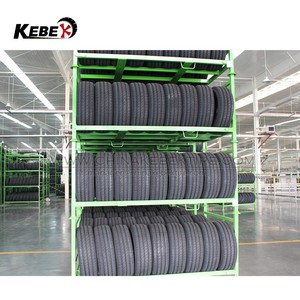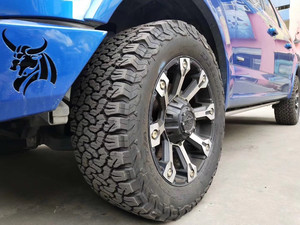(392 products available)

















































































































































































Greenland tires come in several categories to suit various driving conditions and vehicle requirements. Here are some common types:
Tire Size and Measurement
Tire size is written on the sidewall of the tire. It shows the width, aspect ratio, and diameter of the wheel in inches. For example, 215/60R16 means the tire is 215 mm wide, the aspect ratio is 60% of the width, and the wheel is 16 inches in diameter. Different sizes affect handling, traction, and comfort. Larger tires offer better grip and stability, while smaller tires improve acceleration and fuel efficiency. Tire size selection should match the vehicle's specifications and driving needs.
Greenland all-season tires
Greenland all-season tires are designed for moderate weather and light trucks. They have a tread pattern that provides good traction on dry, wet, and light snow surfaces. The tires offer a comfortable ride and long mileage. They are suitable for drivers who do not want to change the tires for different seasons. Greenland all-season tires are popular in regions with mild climates and low winter conditions. They offer versatility and affordability. However, all-season tires have limitations. They may not perform well in extreme winter or summer conditions. The trade-off is acceptable for most seasonal drivers.
Greenland winter tires
Greenland winter tires are specially made for harsh winter conditions. They have a soft rubber compound that stays flexible in low temperatures. The tires have deep tread depths and unique patterns that provide maximum traction on snow and ice. Greenland winter tires also have more sipes, tiny cuts in the tread blocks that create more edges for grip on slippery surfaces. The tires offer excellent braking, acceleration, and cornering performance in winter. They ensure safe driving and peace of mind in cold weather. Greenland winter tires are ideal for regions with long, snowy winters. The tires are also suitable for drivers who need reliable performance in extreme winter conditions.
Greenland all-terrain tires
Greenland all-terrain tires are designed for vehicles that go off-road and on-road. The tires have a rugged tread pattern that provides good traction on various surfaces, such as mud, sand, gravel, and pavement. The tires offer a comfortable ride and low noise level on the road. Greenland all-terrain tires are suitable for SUVs and trucks used for recreation or work in rural areas. They are also ideal for farmers, construction workers, and outdoor enthusiasts. The all-terrain tires provide versatility and durability for challenging environments.
Check Tire Pressure
Greenland tire pressure is one of the most important elements of Greenland tire upkeep. It's critical to adhere to the manufacturer's guidelines for the appropriate inflation level. A tire that is overinflated runs the risk of a blowout, while one that is underinflated has insufficient tread contact with the road.
Tread Depth Inspection
Tire tread depth is important for maintaining traction on slick surfaces. For a visual check, use the penny method or a tread depth gauge to obtain an accurate measurement. Tires should be replaced as soon as they reach the wear limit in order to keep the grip and safety that all-wheel-drive vehicles need.
Tire Rotation
Rotating tires on a regular basis can help them wear evenly. Follow the manufacturer's recommendations for the all-wheel-drive vehicle's rotation schedule. Typically, this entails moving the front tires to the back and vice versa, as well as switching the rear tires from side to side.
Alignment and Balancing
Maintain alignment and balancing for a smooth ride and prolonged tire life. Look for signs of misalignment, such as uneven tread wear or the car pulling to one side. After a tire installation or rotation, have the tires balanced to avoid vibrations and uneven wear.
Visual Inspection
Regularly checking for cracks, punctures, stones lodged in the tread, or other debris can help avoid problems. Pay particular attention to the sidewalls, where damage can go unnoticed but has serious consequences. Remove any embedded debris that may result in a slow leak.
Tire Storage
The proper storage of tires is essential to maintaining their quality. Ensure tires are kept in a cool, dry location away from direct sunlight and heat sources. To avoid flat spots while storing the vehicle, be sure to inflate the tires to the advised level and roll it on its tires.
Seasonal Tire Change
For all-wheel-drive vehicles, seasonal tire changes are crucial. When the weather turns cooler, switch to winter tires that provide better grip on ice and snow. To ensure peak performance, switch back to all-season tires when temperatures rise.
Tire Load Capacity
Greenland tires have a load rating that should not be exceeded. Examine the owner's handbook or the driver's side door jamb for the all-wheel-drive vehicle's load distribution specifications. Overloading can cause tire blowouts or poor handling, particularly when towing.
Tire Maintenance Products
Use tire maintenance products made especially for Greenland tires for the best results. These items clean, condition, and protect the tires. Stay away from anything that has petroleum distillates, which can disintegrate rubber over time.
There are many factors that affect the choice of tires for a vehicle. Here are some of them:
Weather conditions:
The type of tire to be chosen is affected by the kind of weather condition experienced at a given time. This is because some tires are manufactured to withstand certain weather conditions. For example, Greenland winter tires are made with a unique rubber formula that remains flexible even in low temperatures, providing good traction on ice and snow.
Type of vehicle:
The kind of vehicle one has also affects the kind of tires to be chosen. Different vehicles are designed with different features, such as weight and driving dynamics. For instance, heavier vehicles like trucks require tires with more durable materials and increased load capacity.
Tread design:
Tread design is another factor that affects tire choice. This is because different tread designs offer various performances in different conditions. Tires with aggressive tread patterns provide good traction off-road, while those with symmetric treads offer a stable and predictable on-road experience.
Budget:
The kind of budget one has set aside for tires affects the choice. This is because there are different brands and types of tires available in the market, each with its own pricing. To get tires with desirable qualities, one needs to do some research and compare the costs to get the ones that fit the budget.
DIY Greenland tire replacements are more common with experienced DIYers or professional mechanics. The process requires attention to detail and the right tools for a successful outcome. The process involves removing the worn-out tire from the wheel rim and replacing it with the new Greenland tire. Below is a step-by-step guide on how to replace Greenland tires:
Tools and materials needed:
Step-by-step guide:
Q1: Are Greenland tires good?
A1: Greenland tires are ideal for people on a budget. They are not as good as premium tire brands, but they get the job done.
Q2: Are Greenland tires durable?
A2: Greenland tires are not as durable as premium tire brands. However, their longevity depends on driving habits, maintenance, and road conditions.
Q3: Do Greenland tires need seasonal changes?
A3: Greenland tires are all-season tires. However, in regions with extreme weather conditions, seasonal changes may be necessary to ensure optimal performance and safety.
Q4: Do Greenland tires perform well off-road?
A4: The performance of Greenland tires in off-road conditions depends on the specific type of tire. Some all-terrain tires are designed for off-road conditions, while others may struggle in such environments.